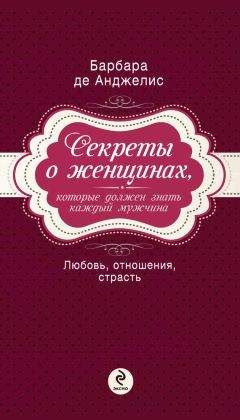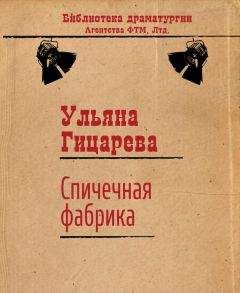Кристофер Дэр - Пациент и психоаналитик: основы психоаналитического процесса
MANGHAM, C.A. (1981). Insight: pleasurable affects associated with insight and their origins in infancy // The Psychoanalytic Study of the Child, 36: 271–277.
MARTIN, A.R. (1952). The dynamics of insight // American Journal of Psychoanalysis, 12: 24–38.
MASTERSON, J. (1972). Treatment of the Borderline Adolescent. A Developmental Approach. – N.Y.: Wiley-Interscience.
MASTERSON, J. (1976). Psychotherapy of the Borderline Adult. A Developmental Approach. – N.Y.: Brunner/Mazel.
MASTERSON, J. (1978). New Perspectives on Psychotherapy of the Borderline Adult. – N.Y.: Brunner/Mazel.
McDOUGALL, J. (1978). Primitive communication and the use of countertransference // Contemporary Psychoanalysis, 14: 173–209.
McLAUGHLIN, J.T. (1981). Transference, psychic reality and countertransference // Psychoanalytic Quarterly, 50, 639–664.
McLAUGHLIN, J.T. (1983). Some observations on the application of frame theory to the psychoanalytic situation and process // Psychoanalytic Quarterly, 52, 167–179.
MEISSNER, W.W. (1978). Theoretical assumptions of concepts of the borderline personality // Journal of the American Psychoanalytic Association, 26, 559–598.
MELTZER, D. (1967). The Psychoanalytical Process. – Lndn: Heinemann.
MENNINGER, R. (1958). Theory of Psychoanalytic Technique. – N.Y.: Basic Books.
MICHELS, R. (1986). Oedipus and insight // Psychoanalytic Quarterly, 55, 599–617.
MISHLER, E.G., WAXLER, N.E. (1966). Family interaction patterns and schizophrenia: a review of current theories // International Journal of Psychiatry, 2: 375–413.
MITSCHERLICH-NIELSEN, M. (1968). Contribution to symposium on acting out // International Journal of Psycho-Analysis, 49: 188–192.
MODELL, A.H. (1984). Psychoanalysis in a New Context. – N.Y.: International Universities Press.
MODELL, A.H. (1988). The centrality of the psychoanalytic setting and the changing aims of treatment // Psychoanalytic Quarterly, 57, 577–596.
MODELL, A.H. (1989). The psychoanalytic setting as a container of multiple levels of reality: a perspective of the theory of psychoanalytic treatment // Psychoanalytic Inquiry, 9, 67–87.
MOELLER, M.L. (1977a). Zur Theorie der Gegenuebertragung // Psyche, 31: 142–166.
MOELLER, M.L. (1977b). Self and object in countertransference // International Journal of Psycho-Analysis, 58: 365–374.
MONEY-KYRLE, RE. (1956). Normal counter-transference and some of its deviations // International Journal of Psycho-Analysis, 37: 360–366.
MOORE, B.E., FINE, B.D. (1967). A Glossary of Psychoanalytic Terms and Concepts. – N.Y.: American Psychoanalytic Association.
MOORE, B.E., FINE, B.D. (1990). Psychoanalytic Terms and Concepts. – New Haven, CT: The American Psychoanalytic Association and Yale University Press.
MORGENTHALER, F. (1978). Technik. Zur Dialektik der psychoanalytischer Praxis. – Frankfurt: Syndicat.
MUSLIN, H. (1986). On working through in self psychology // A. Goldberg (Ed.), Progress in Self Psychology, Vol.2. – N.Y.: International Universities Press.
MYERSON, P.A. (1960). Awareness and stress: post-psychoanalytic utilization of insight // International Journal of Psycho-Analysis, 41: 147–156.
MYERSON, P.A. (1963). Assimilation of unconscious material // International Journal of Psycho-Analysis, 44: 317–327.
MYERSON, P.A. (1965). Modes of insight // Journal of the American Psychoanalytic Association, 13, 771–792.
NAIMAN, J. (reporter) (1976). Panel: The fundamental of psychic changes in clinical practice // International Journal of Psycho-Analysis, 57: 411–418.
NEUBAUER, P.B. (1979). The role of insight in psychoanalysis // Journal of the American Psychoanalytic Association, 27 (supplement), 29–40.
NOVEY, S. (1962). The principle of «working through» in psychoanalysis // Journal of the American Psychoanalytic Association, 10, 658–676.
NOVEY, S. (1968). The Second Look. Baltimore, MD: Johns Hopkins Press.
NOVICK, J. (1970). The vicissitudes of the «working alliance» in the analysis of a latency girl // The Psychoanalytic Study of the Child, 25: 231–256.
NOVICK, J. (1980). Negative therapeutic motivation and negative therapeutic alliance // The Psychoanalytic Study of the Child, 35: 299–320.
NUNBERG, H. (1920). The course of the libidinal conflict in a case of schizophrenia // Practice and Theory of Psycho-Analysis. – N.Y.: International Universities Press.
NUNBERG, H. (1951). Transference and reality // International Journal of Psycho-Analysis, 32: 1–9.
OFFENKRANTZ, W., TOBIN, A. (1978). Problems of the therapeutic alliance: analysis with simultaneous therapeutic and research goals // International Review of Psycho-Analysis, 5: 217–230.
OGDEN, Т.Н. (1983). The concept of internal object relations // International Journal of Psycho-Analysis, 64: 227–241.
OLINICK, S.L. (1954). Some considerations of the use of questioning as a psychoanalytic techniqie // Journal of the American Psychoanalytic Association, 2, 57–66.
OLINICK, S.L. (1964). The negative therapeutic reaction // International Journal of Psycho-Analysis, 45: 540–548.
OLINICK, S.L. (reporter) (1970). Panel: Negative therapeutic reaction // Journal of the American Psychoanalytic Association, 18, 665–672.
OLINICK, S.L. (1978). The negative therapeutic reaction: a retrospective fifteen years later // Journal of the Philadelphia Association for Psychoanalysis, 5: 165–176.
OLINICK, S.L., POLAND, W.S., GRIGG, K.A., GRANATIR, W.L. (1973). The psychoanalytic work ego: process and interpretation // International Journal of Psycho-Analysis, 54: 143–151.
ORNSTEIN, P., ORNSTEIN, A. (1980). Formulating interpretations in clinical psychoanalysis // International Journal of Psycho-Analysis, 61: 203–211.
ORR, D.W. (1954). Transference and countertransference: a historical survey // Journal of the American Psychoanalytic Association, 2, 621–670.
O’SHAUGHNESSY, E. (1983). Words and working through // International Journal of Psycho-Analysis, 64: 281–289.
PARKIN, A. (1981). Repetition, mourning and working through // International Journal of Psycho-Analysis, 62: 271–281.
PERSON, E. (1983). Women in therapy: therapist gender as a variable // International Review of Psychoanalysis, 10: 193–204.
PERSON, E. (1985). The erotic transference in women and men: differences and consequences // Journal of the American Academy of Psychoanalysis, 13, 159–166.
PICK, I.B. (1985). Working through in the countertransference // International Journal of Psycho-Analysis, 66: 157–166.
POLAND, W.S. (1988). Insight and the analytic dyad // Psychoanalytic Quarterly, 57, 341–369.
PRESSMAN, M. (1969a). The cognitive function of the ego in psychoanalysis: I. The search for insight // International Journal of Psycho-Analysis, 50: 187–196.
PRESSMAN, M. (1969b) The cognitive function of the ego in psychoanalysis: II. Repression, incognizance and insight formation // International Journal of Psycho-Analysis, 50: 583–588.
RACKER, H. (1953). A contribution to the problem of countertransference // International Journal of Psycho-Analysis, 34: 313–324.
RACKER, H. (1957). The meanings and uses of countertransference // Psychoanalytic Quarterly, 26, 303–357.
RACKER, H. (1968). Transference and Countertransference. – N.Y.: International Universities Press. [Reprinted Lndn: Karnac Books, 1986.]
RANGELL, L. (1955). On the psychoanalytic theory of anxiety // Journal of the American Psychoanalytic Association, 3, 389–414.
RANGELL, L. (1968). A point of view on acting out // International Journal of Psycho-Analysis, 49: 195–201.
RANGELL, L. (1981). From insight to change // Journal of the American Psychoanalytic Association, 29, 119–141.
RANGELL, L. (1985). Defense and resistance in psychoanalysis and life // H.P. Blum (Ed.), Defense and Resistance. – N.Y.: International Universities Press.
RAPAPORT, D. (1959). A historical survey of ego psychology // E. Erikson, Identity and the Life Cycle – N.Y.: International Universities Press.
RAPAPORT, E.A. (1956). The management of an erotized transference // Psychoanalytic Quarterly, 25, 515–529.
REED, G.S. (1987). Scientific and polemical aspects of the term «transference neurosis» in psychoanalysis // Psychoanalytic Inquiry, 7, 465–483.
REED, G.S. (1990). A reconsideration of the concept of transference neurosis // International Journal of Psycho-Analysis, 71: 205–217.
REICH, A. (1951). On countertransference // International Journal of Psycho-Analysis, 32: 25–31.
REICH, A. (1960). Further remarks on countertransference // International Journal of Psycho-Analysis, 41: 389–395.
REICH, W. (1928). On character analysis // R. Fliess (Ed.), The Psycho-Analytic Reader. – Lndn.: Hogarth Press, 1950.
REICH, W. (1929). The genital character and the neurottic character // R. Fliess (Ed.), The Psycho-Analytic Reader. – Lndn.: Hogarth Press, 1950.
REICH, W. (1933). Charakteranalyse. – Vienna: private publication. REICH, W. (1934). Psychischer Kontakt und vegetative Stroemung. – Copenhagen: Sexpol Verlag.
REID, J.R., FINESINGER, J.E. (1952). The role of insight in psychotherapy // American Journal of Psychiatry, 108: 726–734.
REIDER, N. (1957). Transference psychosis // Journal of the Hillside Hospital, 6: 131–149.
REXFORD, E. (1966). A survey of the literature // E. Rexford (Ed.), Developmental Approach to Problems of Acting Out. Monographs of the American Academy of Child Psychiatry, No. 1.
RICHFIELD, J. (1954). An analysis of the concept of insight // Psychoanalytic Quarterly, 23, 390–408.
RINSLEY, D.B. (1977). An object relations view of borderline personality // P. Hartocollis (Ed.), Borderline Personality Disorders: The Concept, the Syndrome, the Patient. – N.Y.: International Universities Press.
RINSLEY, D.B. (1978). Borderline psychopathology: a review of aetiology, dynamics and treatment // International Review of Psycho-Analysis, 5: 45–54.
RIVIERE, J. (1936). A contribution to the analysis of the negative therapeutic reaction // International Journal of Psycho-Analysis, 17: 304–320.
ROMM, M. (1957). Transient psychotic episodes during psychoanalysis // Journal of the American Psychoanalytic Association, 5, 325–341.
ROSEN, J. (1946). A method of resolving acute catatonic excitement // Psychiatric Quarterly, 20, 183–198.
ROSEN, J. (1965). The concept of «acting in» // L. Abt & S. Weissman (Eds.), Acting Out: Theoretical and Clinical Aspects. – N.Y.: Grune & Stratton.
ROSENFELD, H.A. (1952). Transference phenomena and transference analysis in an acute catatonic schizophrenic patient // International Journal of Psycho-Analysis, 33: 457–464.
ROSENFELD, H.A. (1954). Considerations regarding the psychoanalytic approach to acute and chronic schizophrenia // International Journal of Psycho-Analysis, 35: 135–140.
ROSENFELD, H.A. (1965a). Psychotic States: A Psychoanalytic Approach. – Lndn.: Hogarth Press.
ROSENFELD, H.A. (1965b). An investigation into the need of neurotic and psychotic patients to act out during analysis // Psychotic States: A Psychoanalytic Approach. – Lndn.: Hogarth Press, 1952. [Reprinted Lndn: Karnac Books, 1986.]
ROSENFELD, Н. A. (1968). Negative therapeutic reaction – Unpublished paper.
ROSENFELD, H. A. (1969). On the treatment of psychotic states by psychoanalysis: an historical approach // International Journal of Psycho-Analysis, 50: 615–631.
ROSENFELD, H.A. (1971). A classical approach to the psychoanalytic theory of the life and death instincts: an investigation into the aggressive aspects of narcissism // International Journal of Psycho-Analysis, 52: 169–178.
ROSENFELD, H.A. (1972). A critical appreciation of James Strachey’s paper on the nature of the therapeutic action of psychoanalysis // International Journal of Psycho-Analysis, 53: 455–461.
ROSENFELD, H.A. (1975). Negative therapeutic reaction // P. Giovacchini (Ed.), Tactics and Technique in Psychoanalytic Therapy, Vol. 2. – N.Y.: Jason Aronson.
ROTHSTEIN, A. (reporter) (1983). Panel: Interpretation: Toward a contemporary understanding of the term // Journal of the American Psychoanalytic Association, 31, 237–245.
ROUSSILLON, R. (1985). La reaction therapeutique negative du protiste au jeu de construction // Revue francaise de psychoanalyse, 49: 597–621.
RYCROFT, C. (1958). An enquiry into the function of words in the psycholanalytical situation // International Journal of Psycho-Analysis, 39: 408–415.
RYCROFT, C. (1968). A Critical Dictionary of Psychoanalysis. – Lndn.: Thomas Nelson.
RYCROFT, C. (1985). Psychoanalysis and Beyond. – Lndn.: Chatto & Windus.
SALZMAN, L. (1960). The negative therapeutic reaction // J.H. Masserman (Ed.), Science and Psychoanalysis, Vol. 3. – N.Y.: Giune & Stratton. – Pp. 303–313.
SANDLER, J. (1959). On the repetition of early childhood relationships // J. Sandier (Ed.), From Safety to Superego. – N.Y.: Guilford Press, 1987. Lndn: Karnac Books, 1987.
SANDLER, J. (1960a). The background of safety // J. Sandier (Ed.), From Safety to Superego. – N.Y.: Guilford Press, 1987. Lndn: Karnac Books, 1987.
SANDLER, J. (1960b). On the concept of superego // J. Sandier (Ed.), From Safety to Superego. – N.Y.: Guilford Press, 1987. Lndn: Karnac Books, 1987.
SANDLER, J. (1968). Psychoanalysis: an introductory survey // W.G. Joffe (Ed.), What is Psychoanalysis? – Lndn.: Bailliere, Tindall & Cassel.
SANDLER, J. (1969). On the Communication of Psychoanalytic Thought. – Leiden: University Press.
SANDLER, J. (1976). Countertransference and role-responsiveness // International Journal of Psycho-Analysis, 3: 43–47.
SANDLER, J. (1983). Reflections on some relations between psychoanalytic concepts and psychoanalytic practice // International Journal of Psycho-Analysis, 64: 35–45.
SANDLER, J. (Ed.) (1987). Projection, Identification, Projective Identification. – Madison CT: International Universities Press. Lndn: Karnac Books, 1987.
SANDLER, J. (1988). Psychoanalytic technique and «Analysis terminable and interminable» // International Journal of Psycho-Analysis, 69: 335–345.
SANDLER, J. (1990a). Internal objects and internal object relationships // Psychoanalytic Inquiry, 10, 163–181.
SANDLER, J. (1990b). Internal object relations // Journal of the American Psychoanalytic Association, 38, 859–880.
SANDLER, J., DARE, C., HOLDER, A. (1970a). Basic psychoanalytic concepts: I. The extension of clinical concepts outside the psychoanalytic situation // British Journal of Psychiatry, 116: 551–554.
SANDLER, J., DARE, C., HOLDER, A. (1970b). Basic psychoanalytic concepts: III. Transference // British Journal of Psychiatry, 116: 667–672.
SANDLER, J., DARE, C., HOLDER, A. (1970c). Basic psychoanalytic concepts: VIII. Special forms of transference // British Journal of Psychiatry, 117: 561–568.
SANDLER, J., DARE, C., HOLDER, A. (1970d). Basic psychoanalytic concepts: IX. Working through // British Journal of Psychiatry, 117: 617–621.
SANDLER, J., DARE, C., HOLDER, A. (1971). Basic psychoanalytic concepts: X. Interpretations and other interventions // British Journal of Psychiatry, 118: 53–59.




